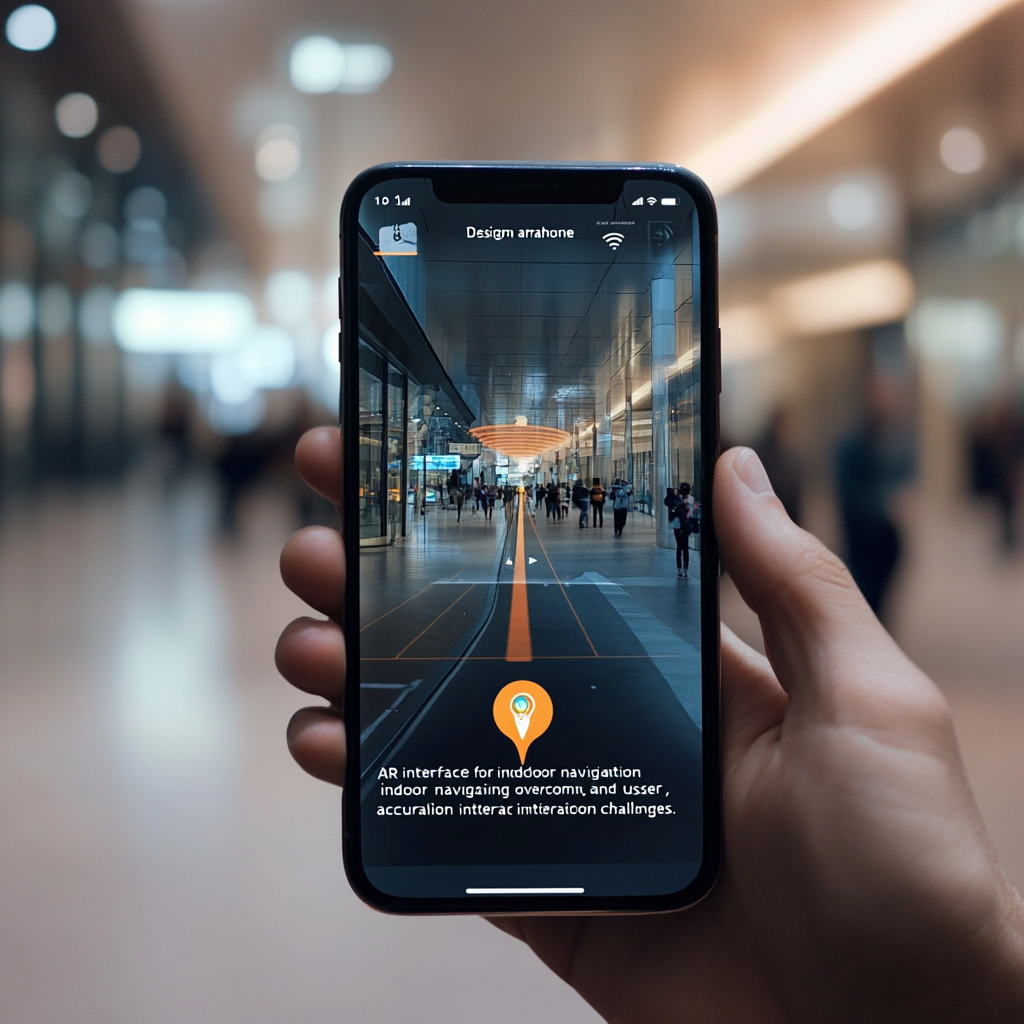
Key Obstacles for Indoor AR on Smartphones Revealed by Real-World Studies
Navigating Challenges in Smartphone-Based Augmented Reality Indoors: A Modern Quest
In our brave new world where reality and the digital realm intertwine like vines on a trellis, augmented reality (AR) has emerged as a dazzling beacon of innovation. You can now visualize that oversized couch in your living room before you make a purchase, or follow arrows projected on the floor to guide you through a labyrinthine office space. But wait! Before you dive headfirst into this tech wonderland, let’s pause and inspect the hurdles that pop up when trying to navigate indoors with AR—because, oh boy, they’re significant.
The Dance of Data: AR Navigation Essentials
Alright, let’s break it down. At its core, AR navigation is about merging what you see in the real world with virtual goodies, and you do this through the trusty lens of your smartphone camera. To pull this off without a hitch, two elements play the leading roles: localization (figuring out where in space your smartphone is) and tracking (monitoring how that smartphone is moving around). Simple, right? Well, think again.
The GPS Black Hole
First on the list of dastardly challenges is the downright unreliable GPS signal you've come to rely on outdoors. When you step inside a building, it’s like entering an invisible barrier that renders GPS almost useless—signal blocked by concrete, pipes, and who knows what else. Without the guiding light of GPS, AR systems get a bit lost and have to rely on a patchwork of alternatives that may or may not get you where you need to be. Frustrating? You bet!
Visual Sensors: The Eyes That Can’t See
Now, let’s chat about the visual sensors—those cameras and fancy LiDAR systems that are supposed to help navigate our surroundings. They’re like your dear old grandma with glasses too thick to see the tiny print on a menu; they have limitations.
-
Searching high and low for landmarks: Imagine looking for a specific barista in a bustling cafe. Likewise, visual landmarks used for AR can be tricksy to find, especially when you’re craning your neck at odd angles or trying to spy them in shadowy corners.
-
LiDAR’s high-light problems: What about our friendly neighborhood LiDAR? Well, it can often throw a tizzy in environments splashed with varying lighting. It’s like trying to take a good selfie without natural light—good luck with that!
-
The IMU conundrum: And let’s not forget the inertial measurement unit (IMU) that resides in your smartphone. This little gadget has issues of its own; it can trip and fall into confusion at different speeds, leading to a not-so-cozy problem known as “drift.” Ever tried playing video games while feeling a bit seasick? That's what we're talking about—virtual elements dancing out of sync with reality.
An Experimental Odyssey
A band of intrepid researchers from Osaka University decided to embark on a quest to unearth these challenges. They set up a virtual classroom where participants rearranged desks and chairs, all guided by AR. Through 113 hours of data and 316 unique patterns, they discovered just how difficult it is to navigate within indoor spaces. The results screamed for more reliable localization and tracking methods.
Bright Sparks of Technology
But despair not, fellow tech explorers! Amidst these challenges, a constellation of technologies is stepping up to enhance indoor AR navigation.
-
BLE Beacons: Imagine these little Bluetooth Low Energy beacons as the helpful pixies of indoor navigation. By broadcasting unique identifiers, they allow smartphones to pinpoint their whereabouts accurately without relying on visual aids that can leave you in the lurch. Eco-friendly and reliable? Score!
-
Wi-Fi-Based Navigation: Here’s another ace in the hole: Wi-Fi tags. You know the ones—the dozens of signals pinging around, beckoning devices to tap in and find their location. It's like a scavenger hunt that employs the building’s existing Wi-Fi infrastructure—a nifty way to navigate sans the headache!
-
Visual Positioning Systems (VPS): Enter the VPS—a clever system using visual markers like QR codes. These little gems hold 3D spatial data that dances around your position, helping give AR a more accurate sense of where you are.
- Radio-Frequency Wizardry: Then there's the flashy Ultra-wideband (UWB) technology which is taking the baton in the race for indoor localization. Unlike visual sensors, UWB isn’t swayed by lighting conditions or line of sight. It's like having a secret map that works even when your view is blocked.
Peering into Tomorrow: Trends and Solutions
The horizon of indoor AR navigation is positively glimmering with potential. Let’s peek into what the future holds.
-
Multi-Modal Integration: The AR applications of tomorrow will likely blend UWB with other technologies—think ultrasound, Wi-Fi, BLE, and RFID combined with fancy visual methods. This fusion will lead to a navigational experience that's as seamless as a dancer gliding across a polished floor.
-
Smoother Experiences: Thanks to 5G’s rapid embrace, indoor navigation will morph into a tantalizing experience where users mingle with digital elements as fluidly as they do with life itself. New computer vision advancements will help in recognizing objects more precisely, and with smart glasses on the rise, we may enjoy hands-free navigation, adding a touch of elegance to the whole affair.
-
AI-Fueled Personalization: Let’s sprinkle some artificial intelligence into the mix. Future AR navigation systems will become adept at tailoring experiences to the individuals using them. Personalized routes? Yes, please! Adaptive interfaces? Count us in!
A Journey Forth
So there you have it—an expedition into the intricate landscape of smartphone-based augmented reality in indoor settings, complete with its fair share of obstacles and glimmers of hope for tomorrow. Understanding these challenges is crucial as we venture into the realms of AR; the vision of an effortlessly interactive digital world beckons us, but not without its trials and tribulations.
Want to stay up to date with the latest news on augmented reality and indoor navigation? Subscribe to our Telegram channel: @channel_neirotoken.

